 |
 |
 |
 |
 |
 |
 |
 |
 |
 |
|
KICP Workshops & Events
|
Other Events, 2013 Cosmic Frontier Workshop March 6 - 8, 2013 | SLAC National Accelerator Laboratory, Menlo Park, CA Website The American Physical Society's Division of Particles and Fields is initiating a long-term planning exercise for the high-energy physics community. Its goal is to develop the community's long-term physics aspirations. Its narrative will communicate the opportunities for discovery in high-energy physics to the broader scientific community and to the government. The Cosmic Frontier working group is charged with summarizing the current state of knowledge and identifying the most promising future opportunities at the interface of particle physics, astrophysics, and cosmology. Topics include dark matter, dark energy, the matter--anti-matter asymmetry, cosmic particles, and astrophysical probes of fundamental physics. The Cosmic Frontier Workshop is a critical component in this planning exercise, providing the opportunity for the Cosmic Frontier working group to identify and communicate the opportunities for discovery in those areas associated with the cosmic frontier. The Cosmic Frontier Workshop will be held at SLAC National Accelerator Laboratory on March 6-8, 2013. Affiliated meetings will be held earlier in the week. The Assay and Acquisition of Radiopure Materials (AARM) Collaboration Meeting will be held on March 4 and the 2013 Deep Underground Research Association (DURA) Annual Meeting will be held on March 5. Read more >> Kathryn Zurek, University of Michigan, "Cosmic clues for dark matter and their implications for a dark matter asymmetry" March 14, 2013 | 4:15 PM | KPTC 106 The nature of dark matter is one of the most important outstanding problems in physics and cosmology. From observing astrophysical objects, we have learned that dark matter represents some 25% of the total energy of the universe, while ordinary matter weighs in at only about 4%. Although they make up a large fraction of the energy of the universe, dark matter particles interact with ordinary matter only very weakly, making their detection via interactions with ordinary matter difficult. We examine some of the constraints and cosmic clues for the nature of the dark matter, and consider some of the recent possible signals for its direct detection. These clues and constraints provide the basis for examining in greater detail a previously little explored class of models, where the dark matter carries a conserved global charge analogous to baryon number. We discuss a few explicit models, and examine their implications, including a few technical aspects of the evolution of the dark matter density and their connections to astrophysical objects such as neutron stars. Meeting to Anticipate KIPAC's Next 10 years of Science: "Big Questions in Particle Astrophysics and Cosmology" September 3 - 6, 2013 | Stanford Website Advances in instrumentation and experimental techniques have revolutionized particle astrophysics and cosmology in the past decade. There has been, and will continue to be, significant and rapid progress in our understanding of the acceleration of cosmic rays, the acceleration of the universe, the makeup and content of the universe, and theoretical and computational models that synthesize our knowledge of the universe. This four-day conference aims to bring together about 200 participants across the fields of cosmology, high energy astrophysics, ground and space- based astronomy, and particle physics, to educate each other about the progress made in the past ten years, and to engage in order to address the outstanding questions that define the challenges and opportunities of the coming decade. Local Organizing Committee: Tom Abel, Steve Allen, Stefan Funk, Chao-Lin Kuo, Risa Wechsler Scientific Organizing Committee: Phil Marshall (Chair), Marusa Bradac (Co-Chair) Read more >> Discussion Meeting about agreements for LIGO-Virgo Event Follow-up Program September 10 - 11, 2013 | KPTC 120 Website The LIGO Scientific Collaboration (LSC) and the Virgo Collaboration currently plan to start taking data in 2015, and we expect the sensitivity of the network to improve over time. Gravitational-wave transient candidates will be identified promptly upon acquisition of the data; we aim for distributing information with an initial latency of a few tens of minutes initially, possibly improving later. The LSC and the Virgo Collaboration (LVC) are now working to develop a program of accompanying electromagnetic observations. Early positional accuracies of the GW candidates will evolve in time, as described in arxiv.org:1304.0670. During early science runs before publication of the first four gravitational wave events, alerts will be available only through partnerships to be developed under this program (ref. LIGO-M1200055). Partners will be asked to sign a Memorandum of Understanding (MoU) involving an agreement on deliverables, publication policies, confidentiality, and reporting. After the publication of the first four gravitational wave events, the current LVC plan is to release alerts on all highly significant detection candidates promptly to the entire scientific community. The Kavli Institute for Cosmological Physics (KICP) at the University of Chicago and the Center for Interdisciplinary Exploration and Research in Astrophysics (CIERA) at Northwestern University will co-host the meeting on September 10-11, 2013, held on the University of Chicago campus. The meeting will be held in the afternoon of the first day and the morning of the second day. Read more >> Related Links: KICP Members: Daniel E. Holz 2013 Brinson Lecture: Andrea M. Ghez, "The Monster at the Heart of the Milky Way" October 15, 2013 | 6:00 PM | School of the Art Institute of Chicago, 112 South Michigan Ave., MacLean Ballroom Website Andrea M. Ghez, 2013 Brinson Lecturer Andrea M. Ghez, a professor of Physics & Astronomy who holds the Lauren B. Leichtman & Arthur E. Levine chair in Astrophysics, is one of the world's leading experts in observational astrophysics and heads UCLA's Galactic Center Group. She earned her B.S in Physics from MIT in 1987, and her PhD from Caltech in 1992 and has been on the faculty at UCLA since 1994. Best known for her ground-breaking work on the center of our Galaxy, which has led to the best evidence to date for the existence of supermassive black holes, she has received numerous honors and awards including the Crafoord Prize in Astronomy (she is the first woman to receive a Crafoord prize in any field), a MacArthur Fellowship, and election to the National Academy of Sciences, the American Academy of Arts & Sciences, and the American Philosophical Society. Her work can be found in many public outlets including TED, NOVA's Monster of the Milky Way, Discovery's Swallowed by a Black Hole, and Griffith Observatory. For more information see the UCLA Galactic Center Group website. 2013 Brinson Lecture: "The Monster at the Heart of the Milky Way" Discover how Andrea Ghez and her team use the world's most powerful telescopes and next-generation imaging technology to peer into the center of our galaxy with more resolving power than ever before. By studying the motions of stars, Professor Ghez provides the best evidence that supermassive black holes exist, challenging our knowledge of fundamental physics and suggesting that most, if not all, galaxies harbor such objects at their cores. Her work has also shown that the environment near a central supermassive black hole looks nothing like what was expected. In the near future, she hopes to test Einstein's theory of relativity, as well as theories of galaxy formation and evolution confronting time-honored hypotheses. This event is co-sponsored by the University of Chicago and the School of the Art Institute of Chicago. Read more >> Physics with a Bang! Holiday Lecture and Open House December 7, 2013 | 11:00 AM | Kersten Physics Teaching Center Website Students, families, teachers and especially the curious are invited to attend our annual Holiday Lecture and Open House. See fast, loud, surprising and beautiful physics demos performed by Profs. Heinrich Jaeger and Sidney Nagel. Talk to scientists about their latest discoveries. Participate in hands-on activities related to their research. Read more >> |


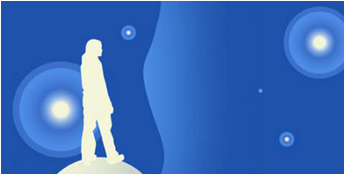
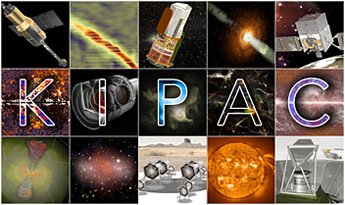
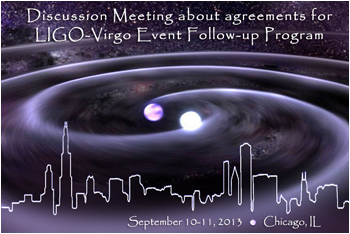
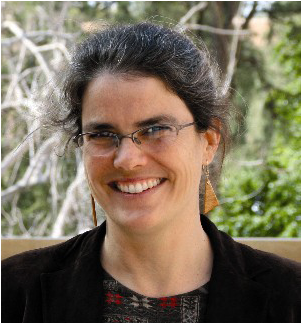
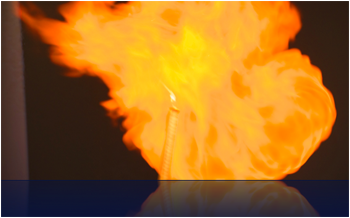



 Overview
Overview